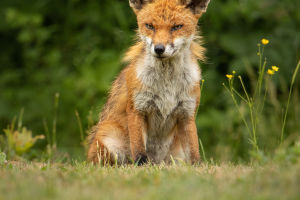Peacocks are a mysterious and charming animal, popular for their beautiful feathers and extravagant display of tail feathers.
They belong to the pheasant family and are one of the largest birds in the world, living in tropical regions of Asia and Africa. In addition to their beautiful appearance, the peacock's display behavior is also impossible to ignore.
The peacock's opening of its tail feathers to attract a mate or engage in social activities is one of the most spectacular performances in nature.
Peacock's display behavior is a complex behavior that involves both its physical and mental state. Typically, peacocks only display this behavior during the breeding season. When the peacock feels comfortable, relaxed, and safe, it will begin to shake its tail. Then, it will open its tail and reveal its beautiful feathers.
Peacock's tail feathers have hundreds of feathers that create a colorful pattern, with dark blue and green being the most prominent colors. Peacocks also have a pair of sharp claws used for attacking enemies or defending themselves.
The tail feathers of peacocks have a special structure called "eye-shaped spots." These spots are composed of alternating yellow, brown, and black colors, resembling large eyes.
These "eye-shaped spots" are the most important part of the peacock's display behavior, as they can attract the attention of female peacocks. Because peacocks lack vocalization, they must attract mates through visual signals. Each peacock's eye-shaped spots are unique, like fingerprints.
This makes each peacock have its unique identifier, which can help them find a mate more easily during the breeding season.
Peacock's display behavior is not just to attract mates, but it may also be used for social behaviors. For example, when two male peacocks fight, they use their display behavior to show their strength and dominance. In this case, the display behavior is not just for attracting a mate, but it can also be used for fighting or intimidating other male peacocks.
The reason for the peacock's display behavior is mainly based on the theory of sexual selection. The theory of sexual selection suggests that animals consider the genetic quality and health of their mating partners to ensure the health and survival success rate of their offspring.
Peacock's display behavior can convey information to potential mates about their health status and genetic quality, thereby increasing their chances of reproduction.
The cost of peacock's display behavior is high. Peacock needs to spend a lot of energy to maintain and repair its beautiful feathers, and the quality of feathers is related to the peacock's health status and genetic quality.
In the wild environment, peacock's display behavior may also attract the attention of predators, increasing the risk of predation. However, despite the high cost of the peacock's display behavior, its beauty and fascinating performance can attract more and more human observation.
Over time, peacock's display behavior has gradually become a cultural phenomenon. People began to take peacock display behavior as inspiration for art and design, which appears in various occasions, such as clothing, furniture, decorations, and even building designs.
In addition, peacock's display behavior has also become a symbol of many countries and regions, such as India and Sri Lanka, which consider peacock as their national bird.
Although the peacock's display behavior has existed in nature for millions of years, due to a series of factors, including climate change and habitat destruction, the number of peacocks is rapidly declining.
Therefore, protecting peacocks and their habitats has become an urgent matter. People need to take measures to protect peacocks, to preserve the opportunity for these beautiful animals to continuously display their display behavior, while also protecting the balance of the ecosystem.


